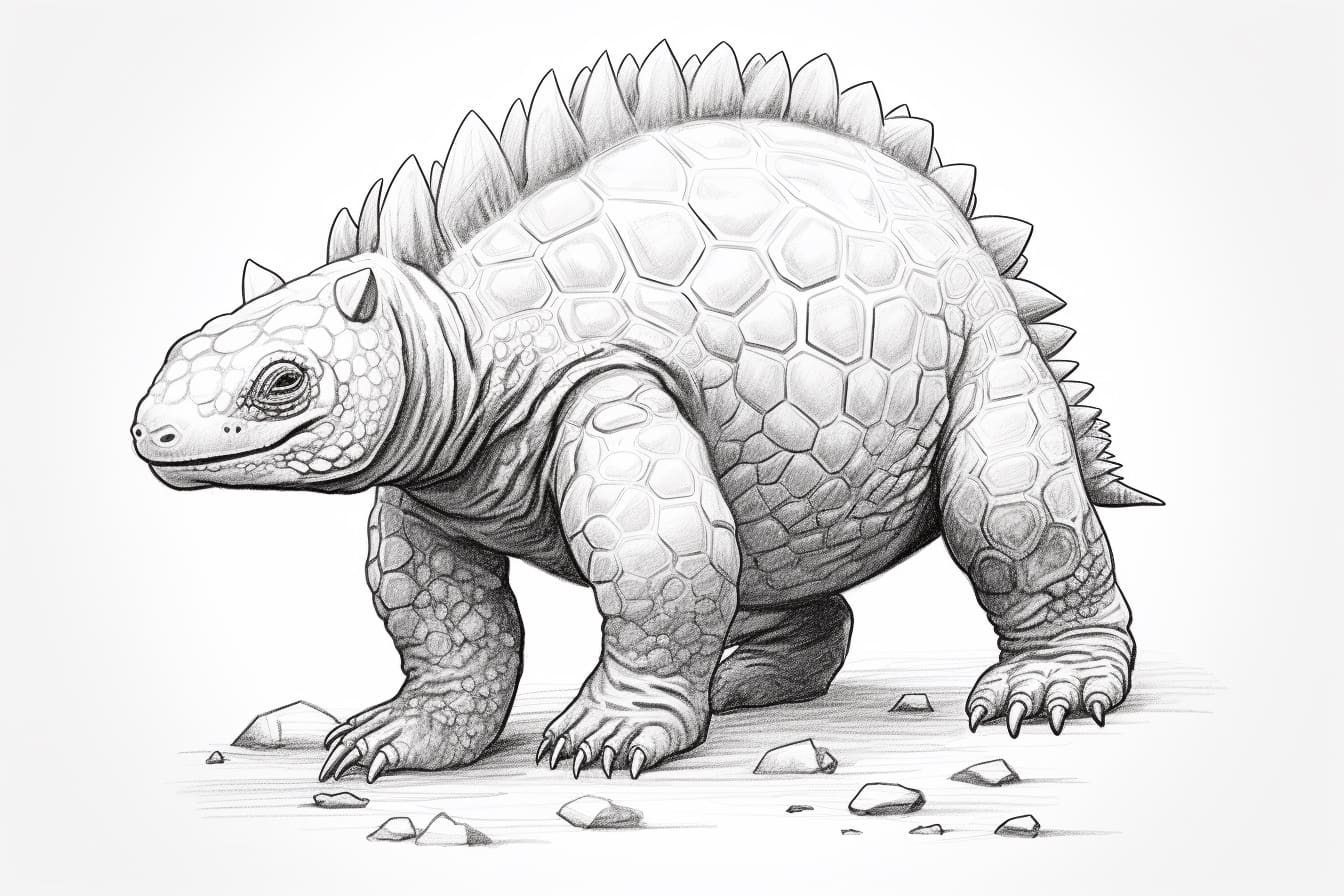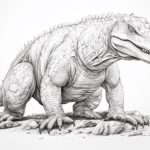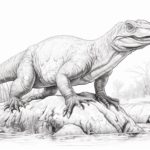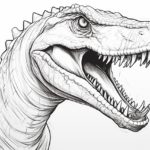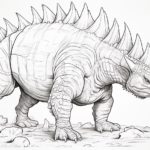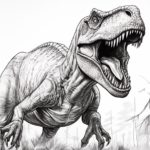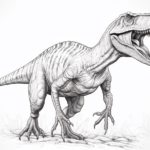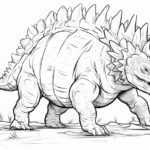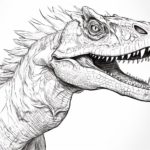Welcome to the fascinating world of paleoart! Today, we will embark on an artistic journey to capture the majestic Ankylosaurus on paper. Known for its heavily armored body and distinctive tail club, the Ankylosaurus is a captivating subject for artists of all skill levels. Through careful observation and attention to detail, we will explore the key features that make this ancient creature a favorite among dinosaur enthusiasts. So grab your pencils and sketchbook, and let’s uncover the secrets of bringing the Ankylosaurus to life through the art of drawing.
Materials Required
To draw an Ankylosaurus, you will need the following materials:
- Drawing paper or sketchbook
- Pencils (preferably a range of graphite pencils such as 2H, HB, 2B, 4B, and 6B for varying shades)
- Eraser (both a kneaded eraser and a regular eraser for different erasing needs)
- Sharpener (to keep your pencils sharp)
- Reference images of Ankylosaurus for accuracy
- Optional: Colored pencils or markers if you want to add color to your drawing
These basic materials will help you create a detailed and accurate drawing of an Ankylosaurus.
How to Draw an Ankylosaurus: a Step-by-step Guide
Step 1: Gather Your Materials
Gather all the necessary materials for drawing, including paper, pencils of varying hardness (2B, 4B, and 6B), eraser, ruler, and reference images of Ankylosaurus for inspiration.
Step 2: Outline the Body
Start by drawing a large oval shape for the body of the Ankylosaurus. Add a smaller oval shape at one end for the head and a larger oval shape at the other end for the tail.
Step 3: Add Limbs
Sketch in four limbs using simple shapes like cylinders. Position the front limbs slightly lower than the back limbs to give the impression of perspective.
Step 4: Detail the Head
Refine the head shape by adding details such as the eyes, nostrils, and the bony plates that cover its skull. Ankylosaurus had a beak-like mouth, so make sure to include that detail as well.
Step 5: Create the Armor
Ankylosaurus had a distinctive armor made of bony plates called osteoderms. Draw these plates along the back and sides of the dinosaur’s body, overlapping slightly to give a realistic texture.
Step 6: Add the Tail Club
Ankylosaurus had a massive bony club at the end of its tail for defense. Sketch in the tail, making it thick and gradually widening towards the end where the club is located.
Step 7: Refine Details
Add scales and texture to the dinosaur’s skin to give it a more realistic appearance. Pay attention to the direction of the scales and how they overlap each other.
Step 8: Erase Guidelines
Once you are satisfied with the overall shape and details of your Ankylosaurus, use an eraser to carefully remove any remaining guiding lines and shapes.
Step 9: Shade and Add Depth
Using varying degrees of pencil hardness, add shading to create depth and dimension to your drawing. Darken areas that would have shadows and leave lighter areas where light would hit the dinosaur.
Step 10: Final Touches
Take a step back and assess your drawing. Make any final adjustments or additions to enhance the overall composition. Consider adding a background or additional details to complete the artwork.
Step 11: Sign and Share
Sign your drawing in the corner with your name or initials to mark it as your creation. Share your artwork with others to showcase your skills and creativity.
Conclusion
In conclusion, mastering the art of drawing an Ankylosaurus requires a keen eye for form, attention to detail, and practice. By following the step-by-step guide provided in this article, artists can learn to capture the unique characteristics and powerful presence of this prehistoric creature on paper. Remember to experiment with different techniques, study reference images, and stay patient as you work towards creating your own impressive rendition of the Ankylosaurus. With dedication and perseverance, anyone can bring this fascinating dinosaur to life through the art of drawing.
Fun Facts About Ankylosauruses
- Ankylosauruses were herbivorous dinosaurs that lived during the Late Cretaceous period, around 68 to 66 million years ago.
- They were heavily armored dinosaurs with thick, bony plates called osteoderms covering their bodies, providing protection against predators.
- Ankylosauruses had a unique weapon on their tail called a “tail club,” which was made of solid bone and could be swung at high speeds to defend against attackers.
- Despite their large size and heavy armor, Ankylosauruses were not slow-moving dinosaurs. They had strong, sturdy limbs and could move relatively quickly when needed.
- Some Ankylosauruses had rows of sharp spikes along their bodies in addition to the bony plates, adding extra protection.
- Ankylosauruses had small, leaf-shaped teeth that were well-suited for grinding tough plant material.
- Fossil evidence suggests that Ankylosauruses may have lived in herds, which could have provided additional protection against predators.
- The name “Ankylosaurus” comes from the Greek words “ankylos” meaning fused or stiff, and “sauros” meaning lizard, referring to the dinosaur’s stiff, armored body.
- Ankylosauruses likely used their tails not only for defense but also for communication and possibly for intraspecific combat or mating displays.
- Some species of Ankylosauruses, such as Euoplocephalus and Ankylosaurus, are well-known and have been popular subjects in dinosaur books, movies, and media.
Suggestions for Scenes and Settings for Ankylosaurus Drawings
- An Ankylosaurus grazing peacefully in a lush prehistoric forest, with sunlight filtering through the trees and casting dappled shadows on its armored back.
- An Ankylosaurus defending itself against a pack of hungry raptors in a rocky, desert-like terrain, with dust kicking up around them as they clash.
- An Ankylosaurus drinking from a crystal-clear river, its reflection shimmering on the water’s surface, surrounded by towering ferns and ancient cycads.
- An Ankylosaurus lumbering through a misty swamp, with eerie fog swirling around its massive legs and the silhouettes of other dinosaurs visible in the background.
- An Ankylosaurus resting under the shade of a towering volcano, its bulky form contrasting with the dramatic backdrop of billowing smoke and molten lava.
- An Ankylosaurus engaging in a playful interaction with its young, nudging them with its armored snout in a sunny clearing filled with colorful flowers and butterflies.
- An Ankylosaurus basking in the warm glow of a sunset on a sandy beach, the waves gently lapping at its feet as seagulls soar overhead.
- An Ankylosaurus exploring a mysterious cave, its tail club raised in readiness as it navigates the dimly lit tunnels filled with ancient rock formations and glowing crystals.
- An Ankylosaurus in a snowy landscape, its breath visible in the cold air as it forages for food among frost-covered trees and icicles hanging from rocky outcroppings.
- An Ankylosaurus in a futuristic cityscape, reimagined in a sci-fi setting with neon lights, flying cars, and towering skyscrapers looming overhead, showcasing a blend of ancient and modern elements.

